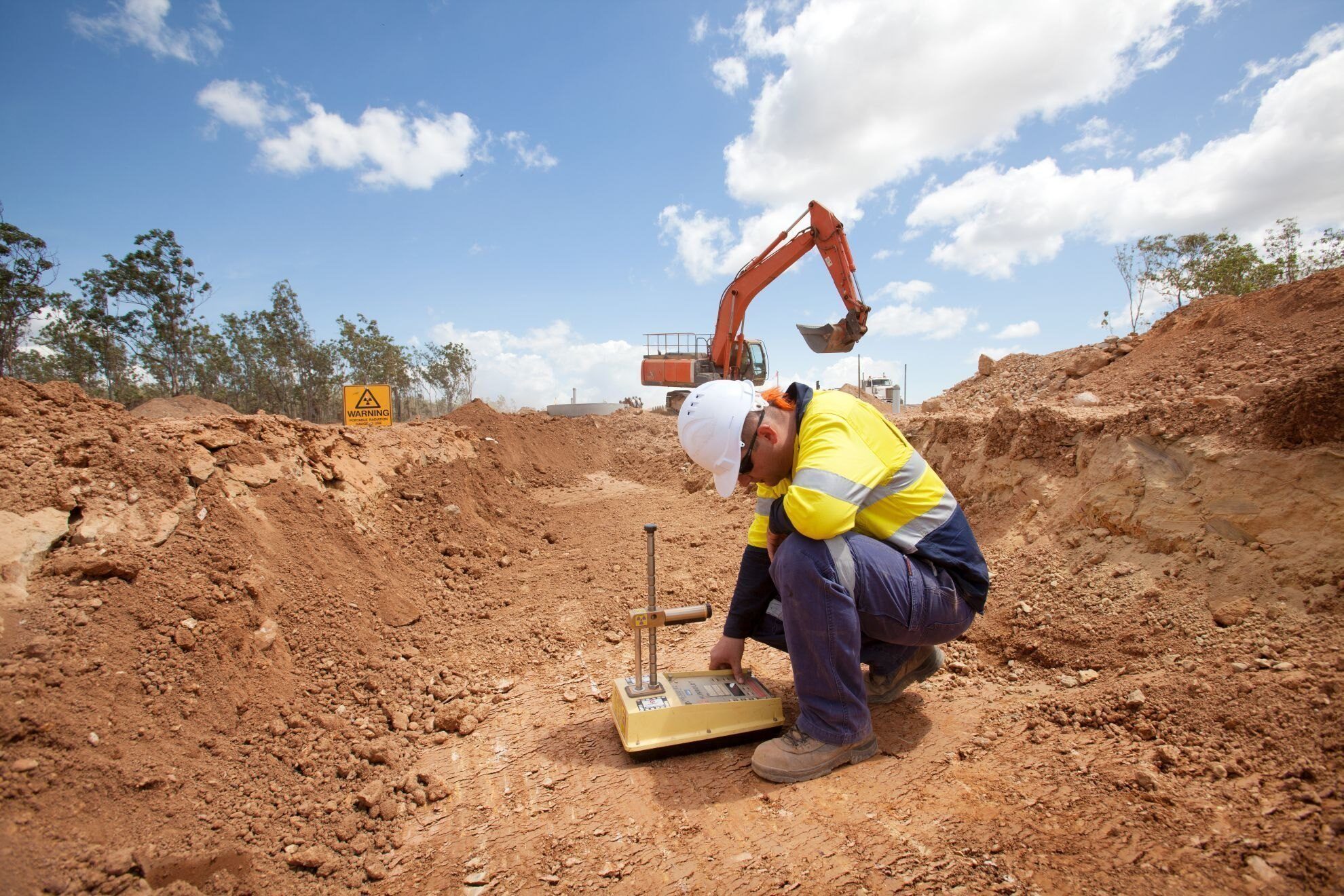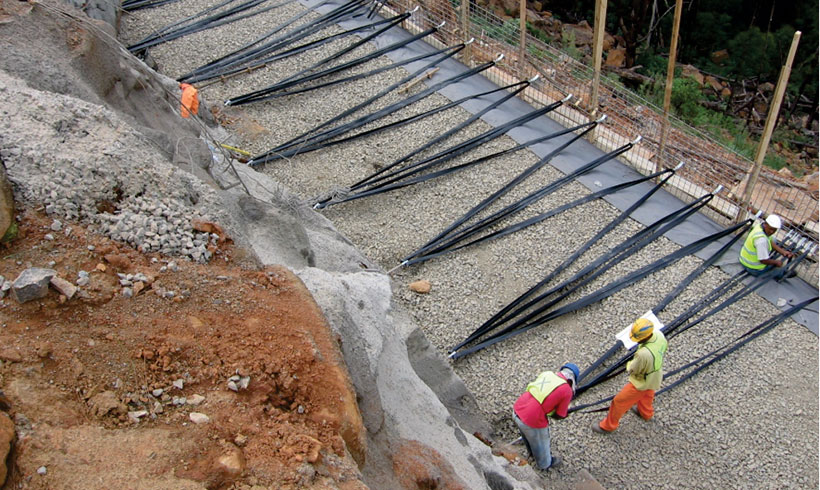The Of Geotechnical Engineering For Construction Projects
The Of Geotechnical Engineering For Construction Projects
Blog Article
The smart Trick of Geotechnical Engineering For Construction Projects That Nobody is Talking About
Table of ContentsThe Best Guide To Geotechnical Engineering For Construction ProjectsThe 9-Minute Rule for Geotechnical Engineering For Construction ProjectsTop Guidelines Of Geotechnical Engineering For Construction ProjectsThe 2-Minute Rule for Geotechnical Engineering For Construction ProjectsGeotechnical Engineering For Construction Projects Fundamentals ExplainedThe Buzz on Geotechnical Engineering For Construction ProjectsLittle Known Facts About Geotechnical Engineering For Construction Projects.Geotechnical Engineering For Construction Projects for Dummies
Accompanying this boosted intricacy comes geological and ecological variables that influence the layout of the foundation, which is probably one of the most vital part of any development. Individuals need to trust that structures, bridges, and roads will stand the test of time. A Geotechnical designer recommends on just how a framework can best be supported offering its unique scenarios What's concealed below the surface area of the ground is most likely one of the most essential item of details that a Geotechnical Engineer desires.These samples are after that evaluated by the laboratory to figure out dirt make-up (Geotechnical Engineering for Construction Projects). The failure of sand, silt, clay, and other products existing in the soil, aids the engineer determine what special attributes the website has and what the ramifications of those may be. Obviously dirt composition is just one examination that can be performed on samples
The smart Trick of Geotechnical Engineering For Construction Projects That Nobody is Talking About
Based on these tests, there might be much more soil borings that are drilled, or the engineer might have sufficient information from the initial examinations to make a referral to the customer on just how best to proceed with their project. Results are generally reported through borings logs which show the dirt composition and attributes at a range of depths.
Geotechnical engineers are accountable for comprehending the buildings of all-natural resources and utilizing this expertise to develop secure, affordable designs for construction projects. It is a vital part of any civil engineering project, as it is made use of to establish the viability of a site for building and to guarantee the framework's safety and security.
This consists of executing lab tests on the samples and making use of geophysical approaches such as seismic refraction and electric resistivity studies. This information is utilized to examine the site's suitability for construction and to figure out the kind of structure that ought to be made use of. Geotechnical design evaluates dirt problems, recognizes prospective risks, chooses a suitable structure system for the proposed structure, and determines the very best foundation style for an offered project.
Indicators on Geotechnical Engineering For Construction Projects You Need To Know
The framework may end up being unpredictable or collapse without proper soil stabilisation, bring about pricey repair services and possible injury. The stabilization procedure entails making use of numerous strategies to improve the stability of the dirt, such as compaction, grouting, and the addition of strengthening products. Without dirt stabilization, the threats connected with construction jobs would certainly be a lot higher, and the results a lot less reliable.
Geotechnical engineers conduct site investigations to assess the dirt's buildings and identify possible dangers. They create and implement soil stabilization techniques, such as adding concrete, lime, or other stabilizing agents, to enhance the soil's toughness and stability.
The 25-Second Trick For Geotechnical Engineering For Construction Projects
Geotechnical engineers are important in assisting to make sure that soil stabilization is done properly Website so that the structure is safe and protected. Geotechnical engineering is also used to evaluate soil problems and identify prospective risks. This includes evaluating prospective flooding, landslides, and various other all-natural catastrophes that could affect click to find out more the foundation.
Geotechnical engineers use this understanding to do website investigations, soil, and rock testing, and to interpret the outcomes to determine the ideal design parameters for a task. This information is used to make sure that the foundation, retaining wall surfaces, inclines, and other structures improved or within the subsurface materials have enough security and resistance to external loads, such as earthquakes, wind, and water.
These structures require a deep understanding of the behavior of the subsurface materials, in addition to the capability to handle the influence of excavation and construction on the surrounding setting. Geotechnical engineers utilize their expertise to identify the suitable style specifications for these structures, such as the shapes and size of the passage, the toughness of the supporting rock, and the type and amount of assistance called for.
Along with the layout and building of structures, geotechnical design likewise plays an essential role in the rehab and maintenance of existing structures. As structures age, they may experience degradation or various other issues that affect their stability and efficiency. Geotechnical designers use their expertise to examine the condition of these frameworks, identify the causes of the troubles, and create approaches to address them.
Geotechnical Engineering For Construction Projects - The Facts
In this article, I will discuss the duty of geotechnical design and the kinds of troubles geotechnical engineers address. Geotechnical designers (geotechs) are associated with almost every kind of civil engineering job. Every framework is supported by dirt or rock unless it is floating, flying, or falling down.
Geotechs are generally most included at the beginning of a job. Geotechnical Engineering for Construction Projects. A few of the jobs that a geotech might be accountable for are exploring subsurface problems, identifying needed lab testing of dirt and rock, translating the subsurface expedition outcomes, and creating reports that document the site conditions and provide recommendations for structures, fill requirements, incline security, and so on
It is not uncommon for geotechnical designers to concentrate on just one of the locations provided above and study that subject their whole occupation. Geotechnical engineering is a crucial aspect of any civil design task. No issue just how fantastic a framework is constructed, it will not be fantastic for long if the foundation is inadequate.
Some Known Details About Geotechnical Engineering For Construction Projects

Oftentimes, points that might not appear crucial end up being vital years later on when concerns arise. One last point to bear in mind: geotechnical design is married to geology. No issue how fantastic your engineering knowledge is, if something crucial is missed in the geologic characterization at a website, your know-how might not save you.
Jese lives in West Virginia with his partner and boy. He takes pleasure in creeping about on any kind of next landslide he can find and hanging out fly fishing on the water. He can be discovered on LinkedIn. I wish you enjoyed this week's post by visitor author Jese Vance. If you're interested in your firm potentially signing up with the Civil Design Collective, please contact us below or call us at 800-920-4007. I wish you'll join us.
Geotechnical Engineering For Construction Projects Fundamentals Explained

It is important to know the dirt problem before making the kind and deepness of structure needed for the framework. In order to recognize the subsurface dirt condition, a geotechnical investigation is required.
The Main Principles Of Geotechnical Engineering For Construction Projects
When the examination results come, the Geotechnical Designer evaluations the record, which describes the soil and rock homes groundwater condition and the associated threats. The kind of foundation needed to develop the framework is then identified. Based upon the recommendation of the Geotechnical Engineer, the architectural engineer then designs the structure.
Report this page